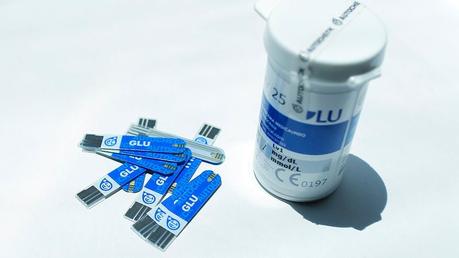
If you have type 2 diabetes, but are not taking insulin, should you test your blood sugar?
Last week, a study published in JAMA looked at the costs of unnecessary blood sugar testing in patients with type 2 diabetes who are not at risk of hypoglycemia (dangerously low blood sugar levels). The researchers looked at two years of claims data and found that one in seven patients at low risk of hypoglycemia made three or more claims for glucose monitor test strips, at an average insurance cost of $325 per person per year. The authors conclude:
Despite a lack of clinical evidence and being identified as a low-value service by the Choosing Wisely initiative, a substantial percentage of patients with type 2 diabetes may still be inappropriately self-monitoring blood glucose.
The news coverage of this story was extensive:
NBC News: Many diabetics needlessly test blood sugar at home The Atlanta Journal Constitution: Are you testing your blood sugar too much? You might be, study says MedPage Today: Are T2D patients monitoring blood glucose needlessly?This line of thinking, discouraging self-monitoring of blood sugar, is problematic but understandable.
It is problematic because the purpose of blood sugar testing isn't necessarily just to guard against hypoglycemia. When patients with type 2 diabetes monitor their blood sugar, it can provide valuable information about how their body responds to different food. Knowledge is power, and knowing that your bowl of whole grain cereal caused a big spike in blood sugar whereas your bacon and eggs did not is valuable information. The point is that glucose strips can be used to monitor more than just dangerously low blood sugars... they can help people identify dangerously high blood sugar, too, and modify their eating patterns to avoid reoccurrence.
In fact, for this reason, many believe that continuous blood glucose monitoring, or CGM, will provide the kind of real-time feedback that is needed to affect the behavior of eaters, whether or not they have type 2 diabetes. ( This Stanford study looked at CGM data in "healthy" individuals and noted that 80% of them experienced a diabetic-level spike after eating a bowl of cornflakes and milk.)
But the notion that blood sugar test strips are mostly to safeguard against hypoglycemia is understandable given the conventional advice most patients receive about diet and type 2 diabetes. Typically, patients are encouraged to consume 40 - 60 g of carbohydrate per meal, enough to cause a post-meal blood sugar spike, meal after meal. Patients with type 2 diabetes are not routinely counseled to use blood glucose strips to monitor their diets and eliminate foods that cause these spikes; if they were, most would end up on a low-carb diet simply by listening to their body's blood sugar rhythms. Sadly, this is not how most patients are using blood sugar strips, so perhaps the usage is, for the most part, "low-value."
It is troubling to see doctors discouraging the use of monitoring when high blood sugar levels have real consequences. Just last week, we saw this story, reporting that rates of amputations among patients with type 2 diabetes are rising:
Reuters: Diabetic amputations on the rise in the U.S.[T]he results suggest that many U.S. diabetes patients need more support to keep their blood sugar controlled and more education about foot care, the authors conclude.
Blood glucose monitoring is a tool, but it must be used properly to be effective. It can support patients who are trained to use it to adjust their diets to achieve fewer blood sugar excursions. However, until this training is provided, it is not helping patients who are not at risk for hypoglycemia.

